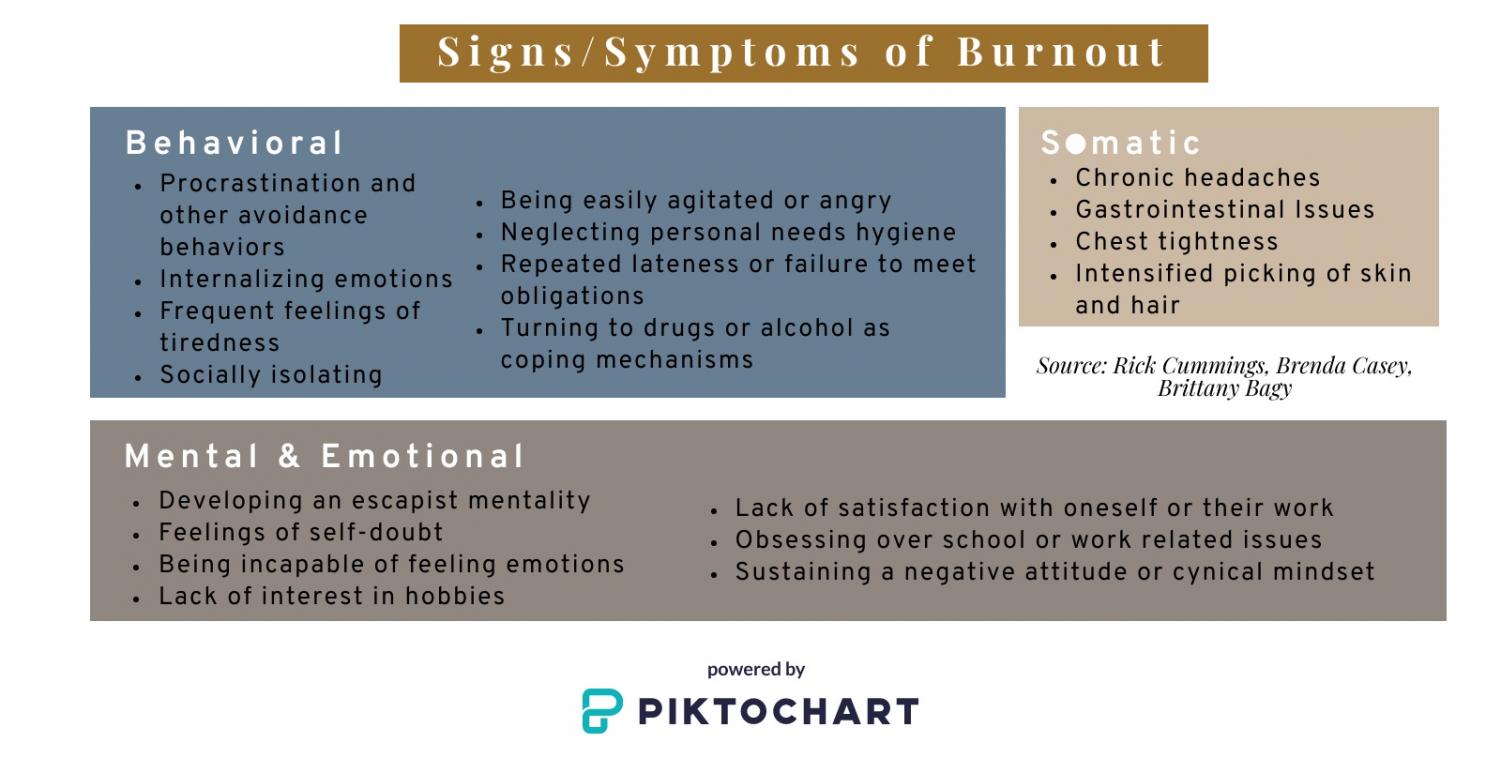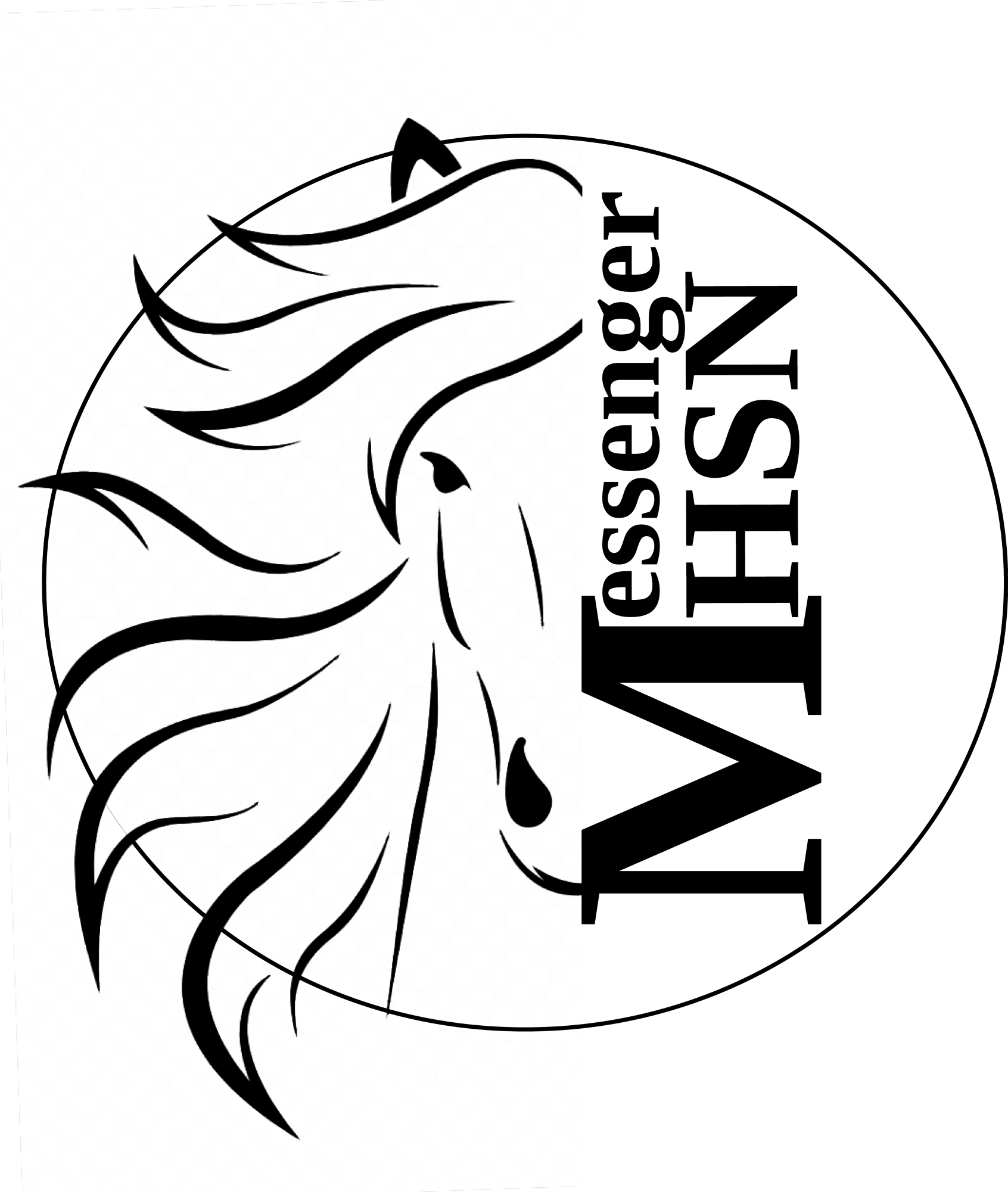Media by Mason Kellerman
Brittany Bagy, LPC, said routinely labelling emotions and having awareness of how emotions are experienced as somatic events are beneficial aspects of mindfulness. “It’s being able to step back and just notice the rising and passing of our own thoughts because thoughts and emotions are fluid, they’re always changing,” Bagy said. “Even in hardship, we can somehow let ourselves know we’re doing the best that we can to help us get through it.”
Burnout, Motivation Affects Personal Well-Being, Productivity
Recent studies by multiple organizations demonstrate the same findings: teens are increasingly more anxious, depressed and overwhelmed leading to burnout.
Anxiety and depression are on the rise among American youth, according to recent findings by Pew Research Center. COVID-19 related closures and distancing regulations threaten and complicate students’ sense of social connectivity and psychological support.
Teens reported their stress levels during the school year exceeded adults’ average reported stress levels, and more than a third of teens reported feeling overwhelmed and depressed or sad as a result of stress in a 2013 American Psychological Association study.
No One is Immune to Stress or Burnout
Brenda Casey, LCSW, social worker, said children, adolescents and adults experience the pandemic and approach burnout differently, especially due to brain development. For example, teens can have an emotionally-charged burnout because of missed milestones.
Casey said there are universal truths to the way individuals can become burned out, such as how teachers, who were abruptly faced with the pressure to work and exert more effort into educating students than normal, struggle to connect with and instruct classes virtually.
“If it continues for a long time, not only do we quit our jobs, but we also end up with a diagnosis like depression and anxiety, which is yet another issue to deal with,” Casey said.
What is Burnout?
Rick Cummings, LCSW, social worker, said burnout is the body’s Emergency Broadcast System reporting one is not resting or relaxing enough and that it will start to go into a crisis.
“If you are driving a car and your fuel indicator says you have 10 miles left and you need to get gas, chances are you will go to a gas station prior to running out,” Cummings said. “Burnout becomes the indicator we are ‘out of gas,’ and we are not listening to it.
Burnout syndrome is the idea of being habitually burned out, he said, which is evidenced by chronic mental fatigue and physical fatigue as well as chronic sadness and depression.
Take the highly-structured setting of schools, in which he said are designed to lessen the stress of learning. The COVID-19 pandemic suddenly disrupted what students and staff were accustomed to and reduced their ability to cope with the stress of newly added responsibilities.
“As a result of that suddenness, the issue is in how anxiety is located in the uncertain and unknown,” Cummings said. “The brain has to work harder to figure out what is going on or what to do next. The body has a physical pushback to change—anxiety, fear and angst rises.”
How Does Anxiety, Stress and Depression Relate to Burnout?
As anxiety rises, Cummings said, it can also trigger depression because of the sheer frustration of feeling anxious on a regular basis, similar to that of an emotional rollercoaster.
Cummings said stress is an element of our outside world as a result of a demand.
“Instead of stressors being processed, they seem to act like barriers because our stress levels are so high, which makes the completion of daily tasks more difficult,” Cummings said.
The access of joy and excitement in everyone’s life has changed and those barriers result in higher levels of stress and anxiety, accumulating into burnout over a period of time.
What Does Burnout Look Like in Daily Life?
Cummings said clues an individual is beginning to burnout can be expressed physically, behaviorally and emotionally. Stressors, no matter how subtle, are important to recognize within one’s work environment, school setting or lifestyle.
There is a misconception burnout happens all of sudden, he said, but it is a gradual process where warning signs are repeatedly ignored.

Burnout Can Unconsciously Affect Aspects of Life
Cummings said signs, symptoms and harmful coping mechanisms of burnout can compound on one another and lead to a cycle of negative thoughts, lack of productivity and denial of the issue.
When one is tired, for example, their body will shift toward trying to complete easier activities, which leads to procrastination. A lack of structure, healthy daily routine and initial feelings of emotional exhaustion can aggravate each other to create a state of poor wellness.
“If you get to a point where you are missing a bunch of assignments, that could be overwhelming,” Cummings said. “The pressure to do them adds to the level of procrastination that you have, so you don’t actually do any of the assignments.”
He said being in a state of burnout can lend to resentfulness, which is a combination of fears, anger, sadness and disgust. Without reinforcing self-compassion, individuals can fail to process these emotions as well as avoid internalizing and further amplifying them.
Recognizing One’s Struggles is Key to Burnout Recovery
Brittany Bagy, LPC, cognitive behavioral therapist, said it is crucial to self-access one’s level of stress, ranging from a stressful period that can be alleviated with self-care to being unable to function and ready to give up on life.
“It’s being able to ask, ‘when I’m experiencing stress, what is it like for me emotionally?’” Bagy said. “‘What are the stories accompanying the stress and emotional state I’m in?’ What we tell ourselves about our lives perpetuate the emotions that perpetuate our experience of stress.”
Mindfulness is essential, she said, to widen one’s perspectives and sustain their individual tolerance for stress. Bagy said mindful exercises like questioning one’s emotional state, labeling feelings, breathing and challenging thoughts is crucial to add clarity to one’s life.
Everyone exhibits outward symptoms of burnout differently, so it is important to understand one’s own behavioral patterns and expressions of negative emotions under stress.
“The more attuned you are to your own body and your own system, the more you’re going to be able to thoughtfully make decisions or change the state that you’re in,” Bagy said.
Bagy said because all forms of stress aren’t preventable, the most effective course of action is to build up a capacity to tolerate it and learn to accept reality rather than control it.

What is Motivation?
Bagy said there are different types of motivation: intrinsic, which is behavior driven by internal rewards, and extrinsic, which is behavior driven by external rewards. External factors can help keep people accountable to their goals if their motivation is rooted in internal factors.
The COVID-19 pandemic stripped some of what motivates them with no end in sight.
“It makes people question, ‘What am I even doing all this for and what is the point?’,” Bagy said. “That way of thinking without having anybody to check in with, ways to regulate yourself or things to look forward to, makes it difficult not to fall into depression and anxiety.”
It is important to have someone for support when trying to explore what is fulfilling, meaningful or purposeful in one’s life, she said. Inquiring about the basics: when and where one feels connected, cared for and lively are key to start the journey towards self-compassion.
Everyone has the capacity to heal, grow and learn in order to restore their level of motivation and productivity, Bagy said, even if it doesn’t mirror that of their pre-pandemic lives.
“We live in a culture and society that’s pushing us to live up to certain expectations and standards,” Bagy said. “It’s important to remember where we have the shared humanity of life, of struggle and hardship. We really are all in it together, and knowing that can be helpful.’

Supporting One Another in an Isolated World
It is essential to embody a connection with someone when feeling restricted or lonely, Bagy said, even if it can feel impossible.
Letting someone express themselves, be heard and validated in their own experience is a vital form of connection, she said. By doing so, one is able to demonstrate they can listen, accept and support someone without attempting to influence or change their beliefs and actions.
“We have the luxury of technology, where we can still show another person we’re actively listening to them,” Bagy said. “Even if it’s just virtually seeing their face, noticing their engagement and witnessing them. Giving somebody your full attention is really a gift.”

